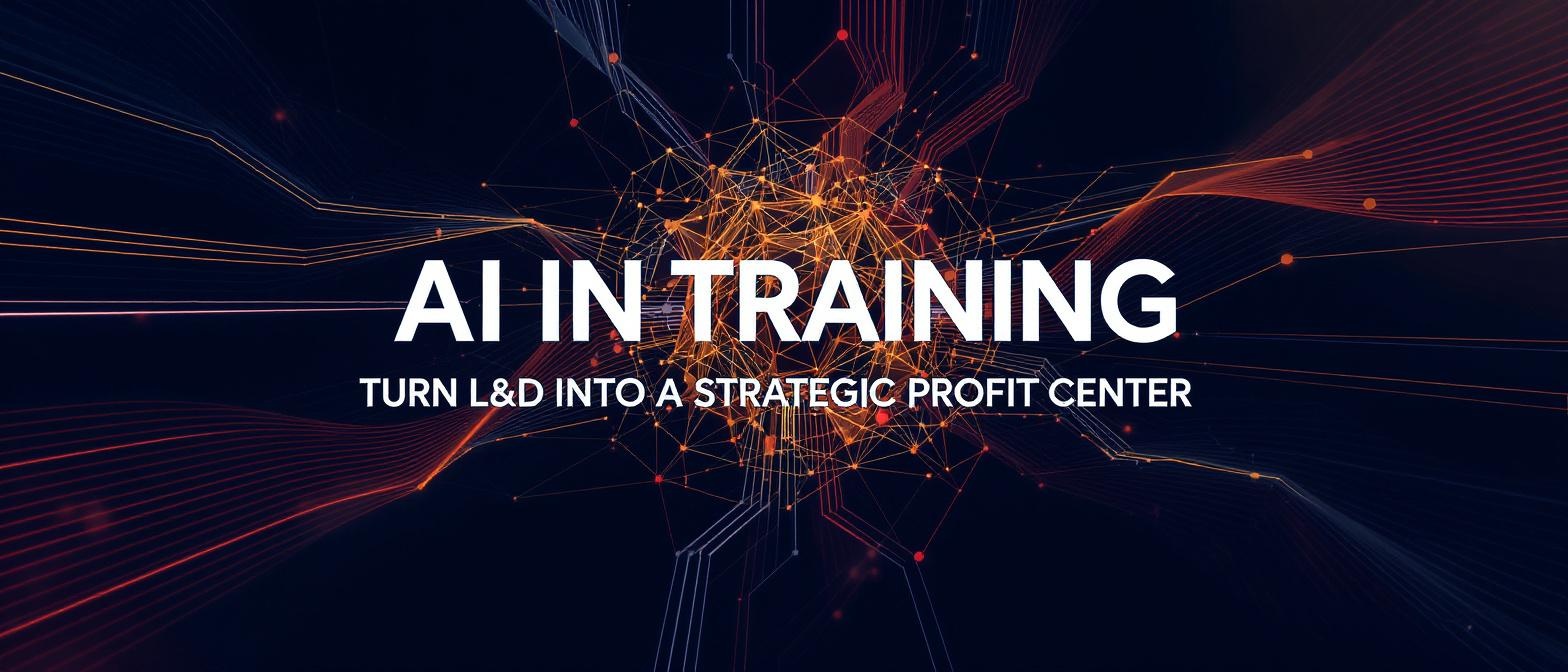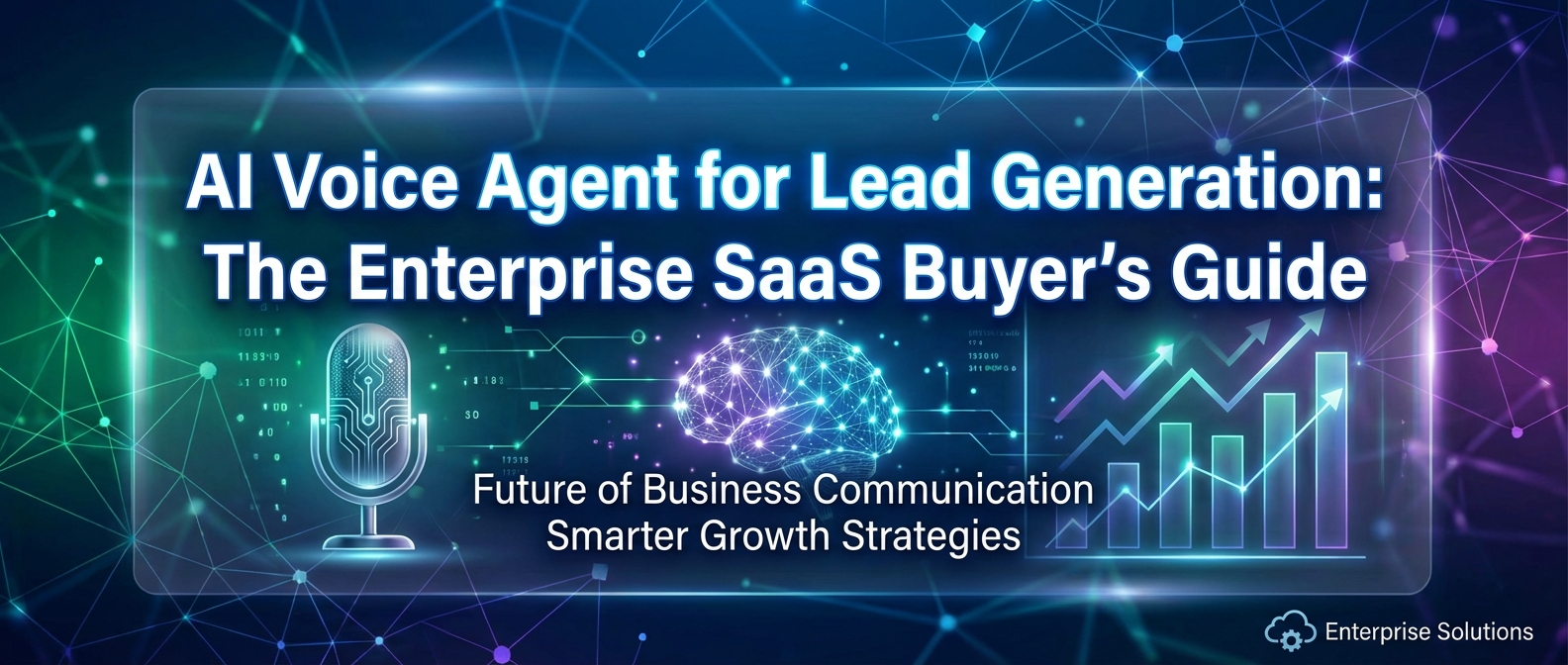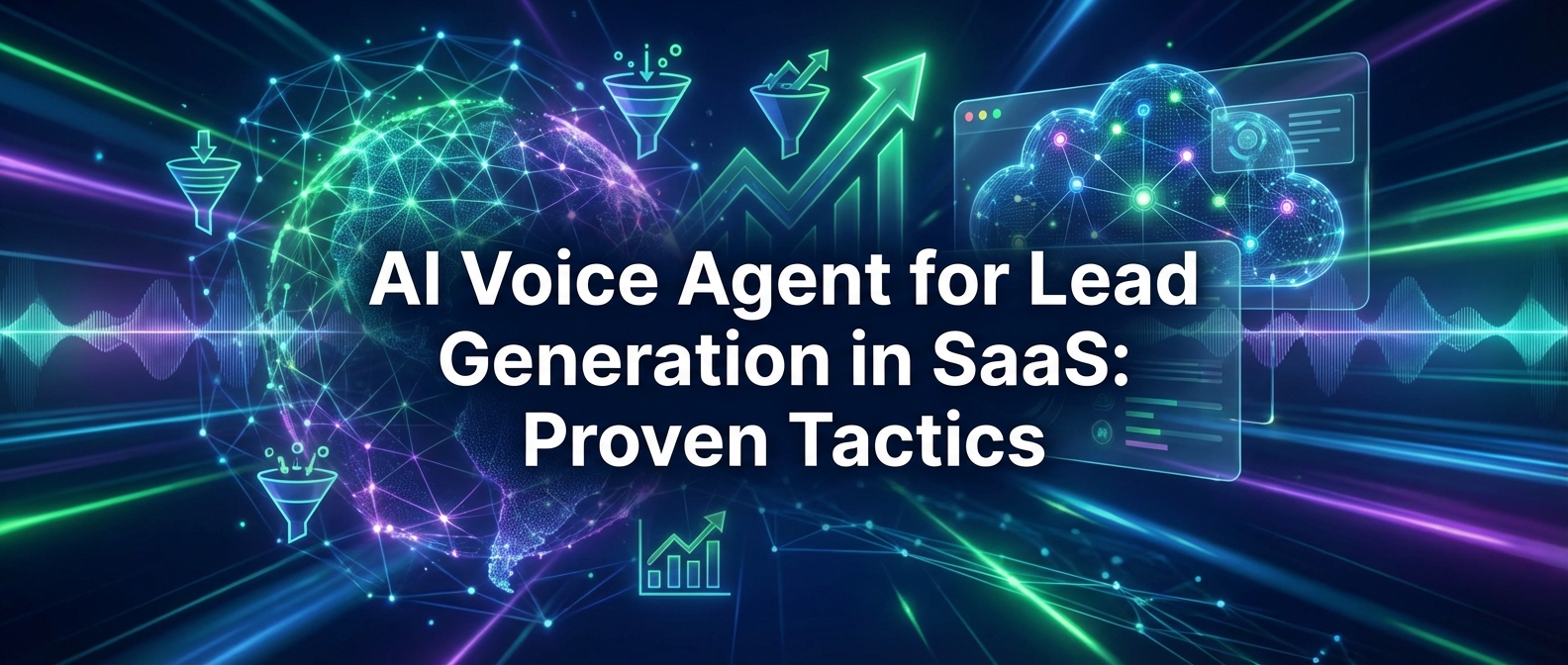AI in Training: The 2025 Playbook for Turning L&D into a Profit Center
Estimated reading time: ~12 minutes
Key Takeaways
- AI can transform L&D from a cost center into a profit-generating function.
- Personalized, adaptive learning drives higher engagement and faster skill acquisition.
- Measurable ROI is rooted in productivity gains, cost savings, and proactive strategy.
- A 4-step framework ensures successful, scalable AI adoption across the organization.
- Looking ahead to 2025, hyper-personalization and predictive skill development will define the next wave of L&D innovation.
In the relentless pursuit of competitive advantage, businesses are scrutinizing every function for its contribution to the bottom line. For too long, Learning and Development (L&D) has been perceived as a necessary cost center. However, the strategic implementation of Artificial Intelligence is flipping this narrative. With a staggering 77% of companies actively using or exploring AI, the question is no longer if you should adopt AI in training, but how you can leverage it to generate measurable, positive ROI. The old methods of one-size-fits-all webinars and static PDF guides are failing to keep pace with the demands of a diverse, globalized workforce, leading to disengagement and wasted resources.
This article cuts through the hype to deliver a data-driven framework for transforming your L&D program. We will move beyond the superficial benefits and provide a step-by-step guide to integrating AI strategically, measuring its financial impact, and overcoming the real-world challenges that stall most initiatives. By focusing on productivity gains and cost efficiencies, you will learn how to reposition your training efforts from a corporate obligation to a powerful engine of growth and profitability.
Re-engineering the Challenge: Why Traditional Training Fails in the AI Era
The corporate training landscape is littered with well-intentioned programs that fail to deliver tangible results. The core issues are systemic: a lack of personalization, scalability challenges, and an inability to prove concrete ROI. Traditional e-learning often suffers from low engagement rates, with employees clicking through modules just to check a box. Instructor-led training, while more engaging, is exorbitantly expensive and impossible to scale effectively across different time zones and languages. This inefficiency is a quiet but significant drain on enterprise resources.
The market is responding with force. The global AI training dataset market alone is projected to surge to $3.4 billion by 2025, signaling a massive shift in how companies are investing in workforce education. The opportunity cost of ignoring this trend is immense. A McKinsey report highlights that companies effectively using AI-powered L&D have seen as much as a 30% increase in workforce productivity. This isn’t just about making training better; it’s about making the entire organization more effective. The primary challenge, therefore, isn’t just creating content; it’s deploying a system that adapts to the individual, scales globally without friction, and links every learning objective directly to a business outcome. Addressing the common challenges of AI implementation head-on is the first step toward unlocking this potential.
The Innovation Engine: AI-Powered Solutions for Modern L&D
To overcome the limitations of traditional training, AI introduces a suite of technologies designed for personalization, scale, and efficiency. This goes far beyond simple automation; it’s about creating entirely new learning paradigms. At the heart of this revolution are generative models and Large Language Models (LLMs) that power the next generation of training tools. Instead of static videos, AI can generate dynamic content featuring digital avatars that can be updated in minutes, not weeks. LLMs enable the creation of interactive chatbots and virtual coaches that provide real-time feedback and answer learner questions 24/7.
This technology allows for the creation of adaptive learning paths, where the curriculum adjusts based on an employee’s performance in real-time. If a sales representative struggles with objection handling in a simulation, the AI can automatically serve them micro-learning modules focused on that specific skill. The impact on localization is particularly profound. AI-driven video and voice synthesis can translate and dub training content into dozens of languages with perfect lip-sync, demolishing the language barriers that have historically fragmented global training initiatives. Platforms like Studio by TrueFan AI enable this at scale, leveraging avatars based on real-life influencers to enhance authenticity and relatability, creating a more engaging experience than a generic, CGI-based presenter. This technical depth allows L&D teams to move from being content creators to strategic architects of personalized learning ecosystems.
Advanced Implementation: A 4-Step Framework for Strategic Adoption
Step 1: ROI-Based Pilot Selection
Before scaling, identify a single, high-impact training area with clear, measurable KPIs. Prime candidates include new-hire onboarding (measure time-to-productivity), compliance training (measure completion rates and error reduction), or sales enablement (measure quota attainment). For example, if your average sales rep takes 90 days to become fully productive, set a goal to reduce that by 25% using an AI-driven onboarding program. This creates a clear baseline to prove ROI.
Step 2: Stakeholder Alignment & Change Management
An AI initiative cannot succeed in a silo. Engage key stakeholders from IT, HR, Finance, and the relevant business units early. IT needs to assess data security and integration with existing systems. Finance needs to understand the cost-benefit analysis. Most importantly, communicate the “why” to employees. Frame the AI not as a replacement for human interaction but as a tool to provide them with better, more convenient, and personalized learning opportunities that help them succeed in their roles.
Step 3: Tech Stack Integration & Data Flow
Focus on solutions that integrate seamlessly with your existing Learning Management System (LMS) and HRIS. Look for robust API capabilities that allow for the automated flow of data. For instance, employee performance data from your HRIS could trigger personalized training assignments delivered by the AI platform to your LMS. This creates a connected ecosystem where learning is continuous and data-driven, rather than a series of disconnected events.
Step 4: Scalable Content Localization
For global organizations, localization is a primary driver of ROI. A centralized L&D team can create a master training module in one language, then use AI to deploy it across dozens of markets simultaneously. This is where the power of modern platforms becomes undeniable. Studio by TrueFan AI’s 175+ language support and AI avatars mean you can create a single script and generate perfectly lip-synced videos for your teams in Tokyo, Berlin, and Mexico City in a matter of hours, not months. This dramatically reduces production costs and ensures consistent, high-quality training for every employee, regardless of their location.
Overlooked Considerations: Navigating the Nuances of AI Integration
While the potential of AI in training is immense, a naive implementation can lead to significant roadblocks. Successful organizations look beyond the technology itself and proactively address the operational and ethical considerations that often get overlooked in the initial excitement.
First, Data Security and Compliance must be paramount. You are handling employee data, performance metrics, and potentially proprietary business information. Your chosen AI platform must have ironclad security credentials. Look for certifications like SOC 2 and ISO 27001, which demonstrate a commitment to enterprise-grade data protection. Discuss data residency and processing policies with your vendor to ensure they align with your corporate and regulatory requirements, such as GDPR.
Second, Change Management and User Adoption are critical. The most sophisticated AI is useless if employees don’t trust it or refuse to use it. The key is to avoid a top-down mandate and instead build a culture of curiosity. Launch pilot programs with enthusiastic early adopters and turn them into internal champions. Highlight success stories and clearly communicate how the new tools are designed to help employees perform better and advance their careers. For a deeper dive into this, explore strategies for a productivity-first approach to AI training.
Finally, don’t neglect to measure the Qualitative Impact. While hard ROI is crucial for executive buy-in, the softer benefits are equally important for long-term success. Survey employees on their satisfaction with the new training, their confidence in their skills, and their perception of the company’s investment in their development. A workforce that feels supported and empowered is a more engaged and productive workforce, a metric that, while harder to quantify, has a direct impact on retention and overall business performance.
Measuring What Matters: Calculating the True ROI of AI-Driven Training
The most significant advantage of AI in L&D is its inherent measurability. Unlike traditional methods where value is often anecdotal, AI-driven systems generate a wealth of data that can be used to calculate a clear, defensible ROI. To win over skeptical CFOs, L&D leaders must learn to speak the language of finance.
A simple yet powerful formula to start with is:
ROI = [(Productivity Gains + Cost Savings) - AI Investment] / AI Investment
- Productivity Gains: Quantify the business impact of better training. For a sales team, this could be a 5% increase in the average deal size. For a customer support team, it could be a 10% reduction in average call handling time. Convert this impact into a dollar value.
- Cost Savings: Calculate the hard costs eliminated by AI. This includes reduced instructor fees, travel expenses, venue rentals, and the man-hours saved in content creation and localization. If you previously spent $50,000 to translate a course into five languages, and can now do it for $5,000, that’s a $45,000 direct saving.
- AI Investment: This is the total cost of your AI platform, including subscription fees, implementation support, and any internal staff time dedicated to managing the system.
The results can be staggering. One industry case study demonstrated a 44% ROI within just three months, with a potential annualized ROI of 476%. Solutions like Studio by TrueFan AI demonstrate ROI through multiple avenues: drastically reduced video production timelines, the elimination of localization bottlenecks, and the ability to rapidly A/B test training messages to see what resonates best, optimizing for effectiveness continuously. By presenting a dashboard that tracks these metrics, L&D can definitively prove its transformation from a cost center to a value-creating powerhouse.
The Future Roadmap: Preparing for the Next Wave of L&D Innovation
The current state of AI in training is just the beginning. As we look toward 2025 and beyond, several key trends are set to further revolutionize the field. L&D leaders who anticipate these shifts will be best positioned to maintain their competitive edge.
The first major trend is Hyper-Personalization at Scale. Future AI systems will move beyond adaptive learning paths to create truly individualized curricula for every employee. By analyzing an individual’s role, career goals, past performance, and even preferred learning styles, the AI will curate a unique learning journey, pulling content from internal and external sources to close skill gaps before they become performance issues.
Second is the rise of the AI-Powered Coach and Mentor. Imagine every employee having access to a 24/7 AI mentor that can help them prepare for a presentation, practice difficult conversations through role-playing simulations, and provide career pathing advice based on the trajectory of successful leaders within the company. This democratizes the benefits of executive coaching for the entire organization.
Finally, we will see a move towards Predictive Skill Development. By analyzing market trends, competitive landscapes, and internal business strategy documents, AI will be able to predict which skills the workforce will need in 6, 12, or 18 months. This allows L&D to proactively design upskilling and reskilling programs, transforming the function from a reactive training provider into a strategic talent developer that builds the workforce of the future.
Frequently Asked Questions (FAQs)
How is AI-driven training fundamentally different from standard e-learning?
Standard e-learning typically involves static, one-size-fits-all modules like videos or quizzes. AI-driven training is dynamic and personalized. It uses data to adapt learning paths for each individual, offers interactive elements like real-time Q&A with virtual avatars, and can be instantly localized into scores of languages. The core difference is the shift from passive content consumption to an active, adaptive, and scalable learning experience.
What is the single biggest mistake companies make when implementing AI in training?
The biggest mistake is focusing on the technology first and the strategy second. Many companies adopt a flashy new AI tool without first identifying a clear business problem it will solve or defining how success will be measured. A successful approach starts with a specific, measurable goal (e.g., “reduce new hire onboarding time by 30%”) and then selects the appropriate AI tools to achieve that specific outcome, ensuring a clear path to ROI.
Is AI training only viable for large, multinational corporations?
Not anymore. While early AI solutions were expensive and complex, the rise of SaaS platforms has democratized access. Many providers offer tiered pricing models suitable for small to medium-sized businesses. The key is to start small with a high-impact pilot project. The efficiency gains, even for a small team, can provide a significant return on a modest monthly investment, allowing the program to scale as the business grows.
How can we ensure the quality and accuracy of AI-generated training content?
Quality control is a human-in-the-loop process. AI is a powerful tool for content generation, but subject matter experts should always review and approve scripts and final outputs. To enhance authenticity, tools like Studio by TrueFan AI use avatars based on real influencers for higher realism and engagement. Furthermore, always choose platforms with robust content moderation and ethical AI policies to ensure brand safety and accuracy.
Is AI going to replace human trainers and L&D professionals?
No, AI is set to augment, not replace, human trainers. It automates the repetitive and administrative tasks that consume much of an L&D professional’s time, such as content creation, translation, and basic knowledge delivery. This frees up human trainers to focus on higher-value activities like strategic planning, one-on-one coaching, leading complex group simulations, and fostering a culture of continuous learning within the organization.
How do we navigate data privacy concerns with employee training data?
Data privacy is non-negotiable. It’s crucial to partner with AI vendors who are transparent about their data handling policies and have enterprise-grade security certifications like SOC 2 or ISO 27001. Ensure your vendor contracts include clear data processing agreements that comply with regulations like GDPR. Internally, maintain transparency with employees about what data is being collected and how it is being used to improve their personal and professional development.
Conclusion: From Obligation to Opportunity
The integration of Artificial Intelligence into Learning and Development represents a pivotal moment for the function. It offers a clear path to transition L&D from a mandatory cost center, often the first to face budget cuts, into a strategic, data-proven driver of business growth. By moving beyond the passive, one-size-fits-all models of the past, organizations can now deliver personalized, scalable, and highly effective training that directly impacts the bottom line. The key to success, however, does not lie in the technology itself, but in the strategic rigor with which it is applied.
By focusing on measurable ROI, aligning with core business objectives, and proactively managing the challenges of implementation, you can build a powerful case for investment and demonstrate undeniable value. The tools are no longer the barrier; the primary limitation is a lack of strategic vision. The future of corporate training is not about simply creating more content faster; it’s about delivering the right learning, to the right person, at the right moment, in a way that measurably improves both their performance and the company’s profitability. Your next step is not to procure an AI platform, but to identify the single most impactful business metric your training program can improve. Start there, and build your profit center.




